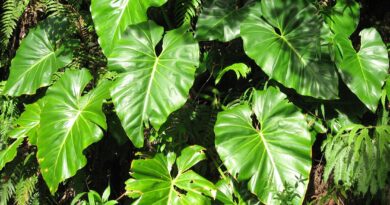Fern
The Enchanting World of Ferns: Nature’s Ancient Marvels
Introduction
In the quiet corners of lush forests, beneath the canopies of towering trees, and along the banks of meandering streams, a world of green elegance flourishes. Ferns, with their delicate fronds and ancient lineage, have captured the imaginations of nature enthusiasts and botanists for centuries. These fascinating plants, belonging to the class Polypodiopsida, have stood the test of time, evolving over millions of years to become one of the oldest groups of vascular plants on Earth. In this article, we will delve into the enchanting world of ferns, exploring their history, biology, ecological importance, and the profound impact they have had on human culture.
The Ancient Legacy
Ferns are often referred to as “living fossils” due to their ancient origins, dating back over 360 million years. Their evolutionary history can be traced to the Devonian period, making them one of the oldest plant groups on the planet. The very characteristics that define ferns, such as their feathery fronds and spore-producing structures, have remained relatively unchanged throughout their long existence, providing scientists with invaluable insights into Earth’s prehistoric flora.
Biology of Ferns
Ferns belong to the group of vascular plants, which means they have specialized tissues for conducting water, minerals, and food throughout their structures. Unlike flowering plants, ferns reproduce through spores rather than seeds. These spores develop in tiny structures called sporangia, usually found on the underside of fern fronds. When mature, sporangia release spores into the surrounding environment, allowing ferns to colonize new habitats.
One of the most captivating features of ferns is their diverse array of shapes and sizes. From the diminutive moss-like ferns that carpet forest floors to the towering tree ferns that can reach heights of up to 80 feet, ferns exhibit remarkable morphological diversity. This diversity has allowed them to adapt to a wide range of environments, from temperate forests to arid deserts.
Ecological Importance
Ferns play a crucial role in various ecosystems around the world. They are often found in understory habitats, where their ability to thrive in low-light conditions makes them essential components of forest ecosystems. Ferns contribute to nutrient cycling by breaking down organic matter and enriching the soil. Additionally, their extensive root systems help prevent soil erosion, stabilizing fragile landscapes.
Furthermore, ferns serve as habitat and food sources for numerous animal species. Insects, birds, and mammals often rely on ferns for shelter, nesting material, and sustenance. Some species of ferns have symbiotic relationships with nitrogen-fixing bacteria, enhancing soil fertility and benefiting neighboring plants.
Ferns and Human Culture
Throughout history, ferns have held a special place in human culture and folklore. In ancient civilizations, ferns were believed to possess magical properties, and their appearance was often associated with supernatural occurrences. The intricate patterns of fern leaves have inspired artists, poets, and designers, to find their way into various forms of art and decoration.
During the Victorian era, a fascination with ferns, known as “pteridomania,” swept across Europe and America. Collecting and cultivating ferns became a popular hobby, leading to the establishment of specialized ferneries in botanical gardens and private estates. This trend influenced fashion, home décor, and literature, leaving a lasting mark on the cultural landscape.
Conservation Challenges
Despite their resilience and adaptability, many fern species are facing threats due to habitat destruction, climate change, and invasive species. Deforestation, in particular, poses a significant risk to fern-rich ecosystems, leading to the decline of numerous species. Conservation efforts are crucial to preserving the diversity of ferns and the ecosystems they inhabit.
Conclusion
Ferns, with their ancient heritage, biological complexity, and cultural significance, continue to captivate the human imagination. From their prehistoric origins to their vital ecological roles, ferns exemplify the wonders of the natural world. As stewards of the Earth, it is our responsibility to protect these remarkable plants and the habitats they inhabit. By understanding and appreciating the enchanting world of ferns, we can contribute to their conservation and ensure that future generations can marvel at their beauty and significance.



